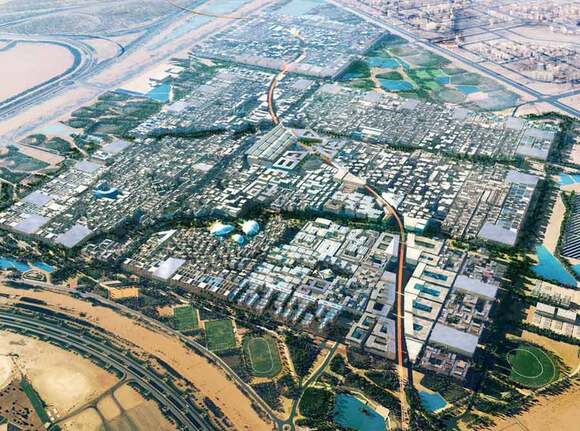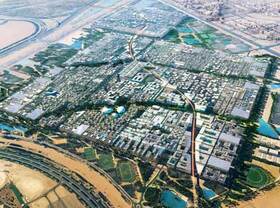BERLIN (DE) — In a new series, the International New Town Institute (INTI) presents the exportation of European models (urban planning, landscape architecture, social housing, water management, branding tools and technology) to various corners of the world. The influence of German multinational Siemens in the development of ecocity Masdar is the focus of this first instalment.

For many European engineering and design fi rms, the first decade of the 21st century was dedicated to exploring foreign markets. While Europe seemed to stagnate, Asian countries (in particular) couldn’t get enough of cutting-edge innovations. Europeans answered the siren song and began moving their offices abroad, starting satellites and signing MOUs. A forerunner to this exodus, Siemens AG has been working internationally since 1866. Today, this multinational corporation is responsible for groundbreaking work in the technology, engineering and health sectors. Unlike most private technology vendors, however, Siemens has begun profiling itself as an urban partner. In emerging economies facing exponential urban growth, companies like Siemens are able to experiment at the urban scale in ways that would be unimaginable back in Europe.
For example, as a strategic partner for the much-publicized Masdar City, Siemens plays a key role in the development of this eco-city’s sustainable systems and infrastructural solutions. Throughout Masdar, Siemens’ technology was integrated into Foster + Partners’ design for the city from the ground up (although some projects were lost to the post-2008 financial reshuffling). Siemens’ influence is present in the form of building management systems, a medium voltage network, innovative lighting systems and other intelligent building technologies. In fact, the latest milestone is the company’s new Middle East Headquarters, opened in January 2014. The award-winning building lies at the heart of Masdar City and is LEED Platinum accredited.
For many European companies, 2008 marked the end of a dream. Markets shrank everywhere, leaving no one untouched – including Masdar. For Siemens, however, this new frontier has already provided something priceless, a real-world testing ground for urban-scale interventions. The question now becomes: When will we see the results of these experiments implemented beyond showcase models?



